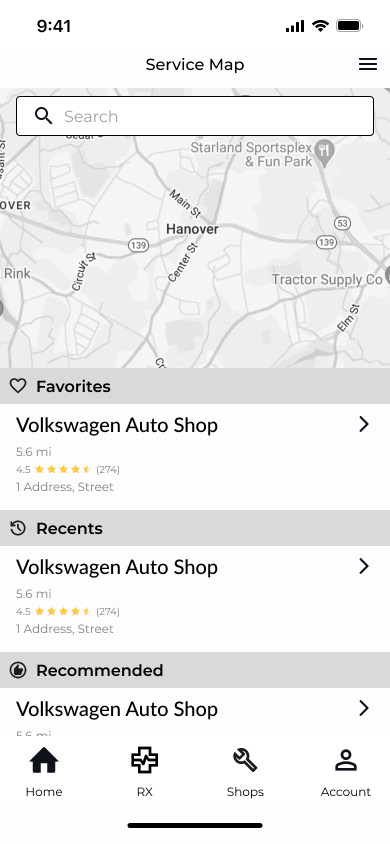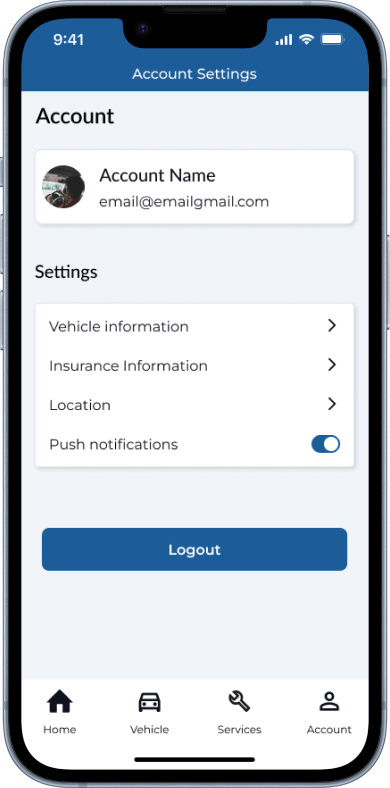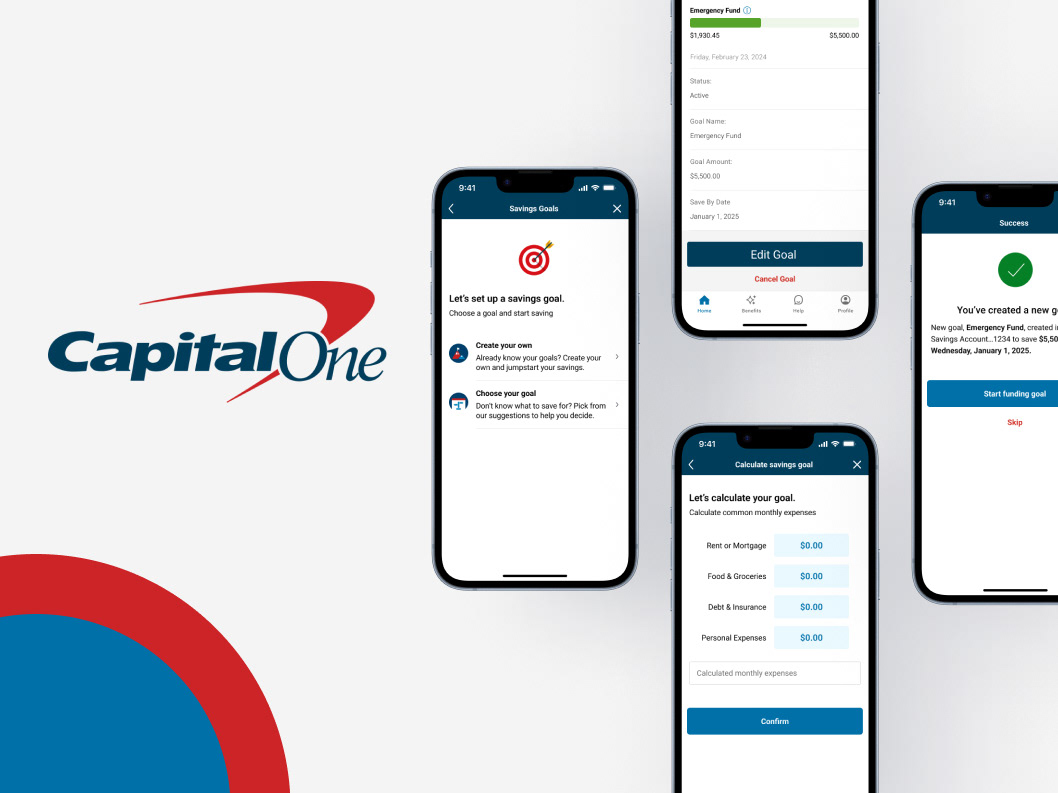Challenge
Driving is the primary mode of transportation in America, and although about 88% of the US population have cars - many are not experts in how to maintain and manage their car care.
Common problems car owners face while maintaining their cars are:
• Forgetfulness and missed maintenance
• Overlooking vehicle recalls and safety issues
• Difficulty understanding car problems and needs
• Lack of understanding of why and when maintenance is needed
• Predatory dealerships, car repair, and maintenance shops
Common problems car owners face while maintaining their cars are:
• Forgetfulness and missed maintenance
• Overlooking vehicle recalls and safety issues
• Difficulty understanding car problems and needs
• Lack of understanding of why and when maintenance is needed
• Predatory dealerships, car repair, and maintenance shops
Goals
The goal is to create an app that aims to streamline car maintenance management for car owners
• organization of maintenance
• empower car owners to make informed decisions about their car
• enhance safety and limit financial distress in car owners
• empower car owners to make informed decisions about their car
• enhance safety and limit financial distress in car owners
Target Audience
The app is designed for individuals who drive their own cars as well as those who drive company vehicles, individuals who have recently purchased a car to learn about routine maintenance and schedules, individuals who want to minimize repair costs by staying on top of preventative maintenance task, and professionals who have busy schedules and find time to be limited to prioritize car maintenance.
Research & Analysis
Aside from completing a competitive market analysis, I also conducted user interviews that would help point out common pain points in car owners in America.
Interview Insights
Through this research we gained important insights on what users identified as car maintenance, what pain points they faced such as:
• predatory industry
• staying on top of tasks
• the need for easily accessible knowledge in their car
• for users to feel empowered with their decision making.
• staying on top of tasks
• the need for easily accessible knowledge in their car
• for users to feel empowered with their decision making.
These pain points were visualized as recurring themes in an affinity map.
From synthesizing my research, I came to these conclusions:
1. Good car maintenance is not common knowledge
2. Users find their lack of knowledge can leave them to be taken advantage over in maintenance shops and dealerships
3. Users want to feel empowered making decisions on their car
4. Forgetfulness and prioritization of car maintenance is not always in the forefront of users daily lives
2. Users find their lack of knowledge can leave them to be taken advantage over in maintenance shops and dealerships
3. Users want to feel empowered making decisions on their car
4. Forgetfulness and prioritization of car maintenance is not always in the forefront of users daily lives
Personas
I developed two user personas to encapsulate key characteristics and preferences to start tailoring the product to meet diverse user needs and created project goals to extend my understanding of the app’s functionality.
Based on these goals and personas, I determined what key elements should be featured in the app. It was important for me to start with creating an onboarding task flow as it would require key information from the user that would be integrated into the app's major screens.
Feature Set
Onboarding Task Flow
I created a sitemap to show the hierarchical structure of the product and its pathways.
CaRx Sitemap
Design
I sketched out low-fidelity wireframes to visualize what some of the primary screens would look like before moving on to mid-fidelity wireframes in Figma.

Sign Up

Onboarding 1

Vehicle Home

Upcoming Maintenance

Shop Map

Account Settings
I gathered participants for a round of user testing to gain feedback on the design and usability of the app that would later influence my hi-fidelity mockups.

Sign Up

Onboarding 1

Onboarding 3

Vehicle Details

Maintenance Reminders

Service Map

Services Glossary

Account Settings
Branding
I I decided to call the app CaRx, a simple way of incorporating the primary use being Cars and Rx to incorporate the concept of car health and maintenance. I chose a simple color theme for the brand as to correlate with the standards in health and car industries simultaneously creating a trustworthy and concentrated setting within the app.
Testing Hi-Fidelity Wireframes
I conducted another round of user testing that included task walkthroughs for onboarding and navigation, and also incorporated A/B testing for some screen layouts and navigational task flows.
100%
of users thought each task was intuitive, cohesive, and easy to follow
of users thought each task was intuitive, cohesive, and easy to follow
75%
of users wanted a better way to identify and input updated accuracy of mileage
of users wanted a better way to identify and input updated accuracy of mileage
75%
of users expected personalization to their specific car , make, and modal
of users expected personalization to their specific car , make, and modal
100%
of users would use the app again if it was available
of users would use the app again if it was available
Iterations Based on User Feedback
1. Ability for users to input repair data and scan important documents
The majority of users wanted a streamlined flow to update repairs, manually adding services they've completed, reporting a crash and the ability to upload important service documentation to relate back to later on if needed.
Log a Service / Scan Documents Iteration
2. Editing the app's navigation
As a part of A/B testing, I asked users to give feedback on the navigation resulting in changes of location and associated screens based on what user's expected to see.
App Navigation Iteration
3. Input for Insurance Information
Many users commented on the lack of direction to input necessary dashboard information, specifically their insurance information.
Insurance Information Iteration
4. Intuitive structure of service glossary
Although all users liked the addition of the service glossary within the app, many commented on how overwhelming an alphabetical list was for such a large amount of information.
Service Glossary Iteration
5. Push notifications and reminders
Set Reminder Flow Iteration
Visual Design: UI Kit
Final Prototype
Takeaway
The CaRx case study highlights the importance of user-centric design in creating a seamless and efficient experience for car owners.
There are several promising opportunities for expansion and enhancement including:
• integrating features for managing multiple cars within a single user account
• tracking warranties to aid users' awareness of their expiration date
• monitoring penalty points for insurance purposes to understand pricing and timeline
• facilitating the tracking of car payments to help users stay on top of their financial obligations
• tracking warranties to aid users' awareness of their expiration date
• monitoring penalty points for insurance purposes to understand pricing and timeline
• facilitating the tracking of car payments to help users stay on top of their financial obligations
By addressing these future opportunities, we can continue to evolve and refine our app to better meet the diverse needs of our users, ultimately enhancing their overall car ownership experience.







